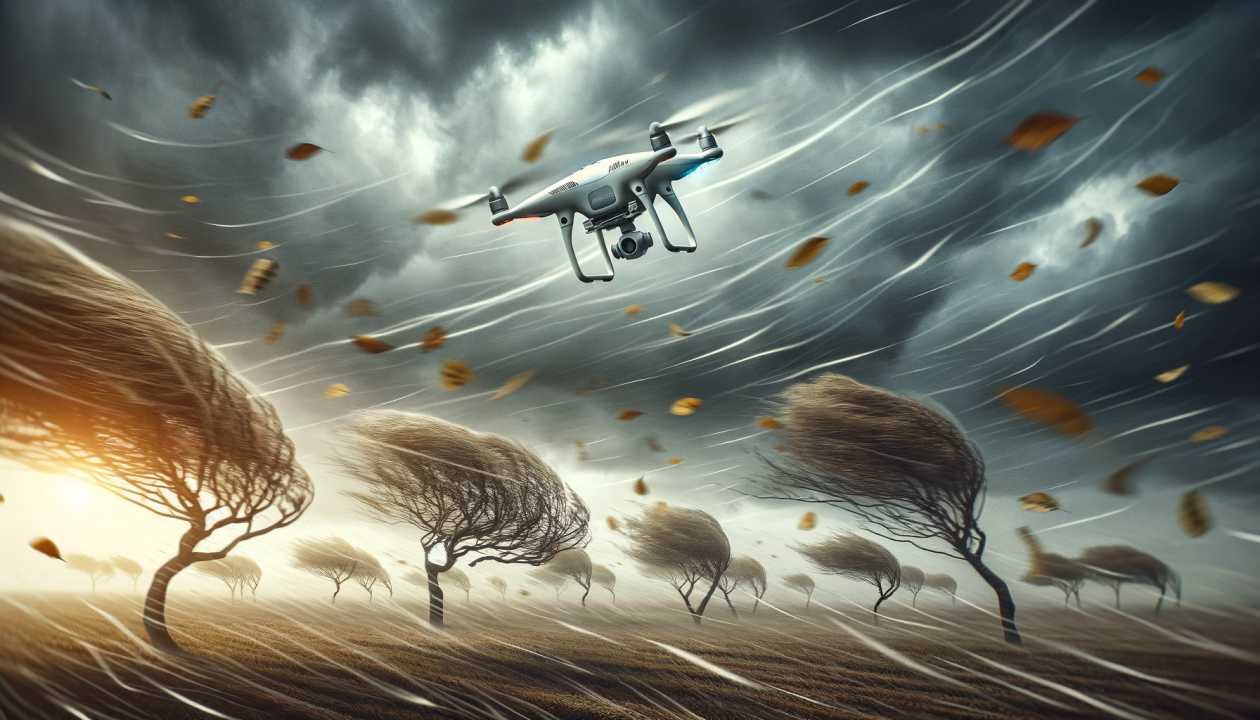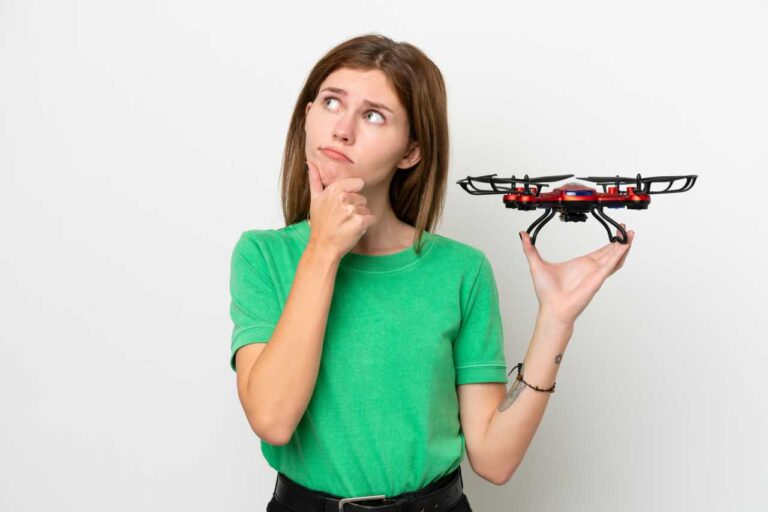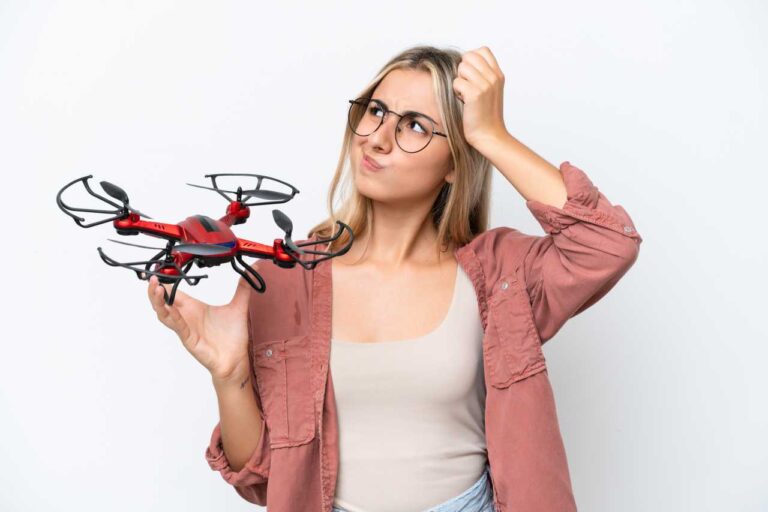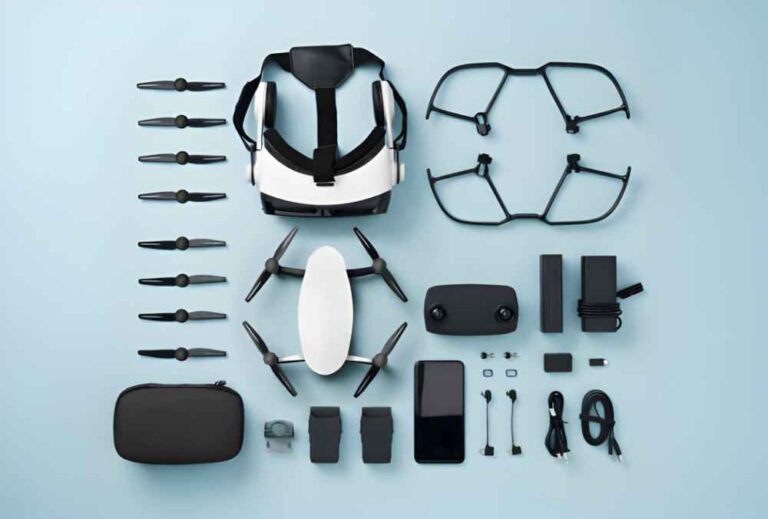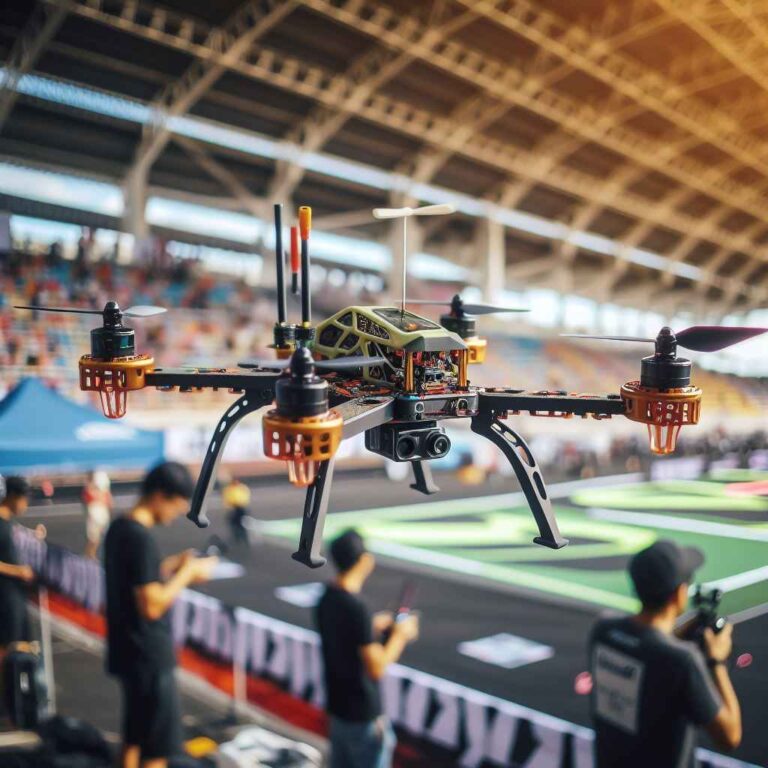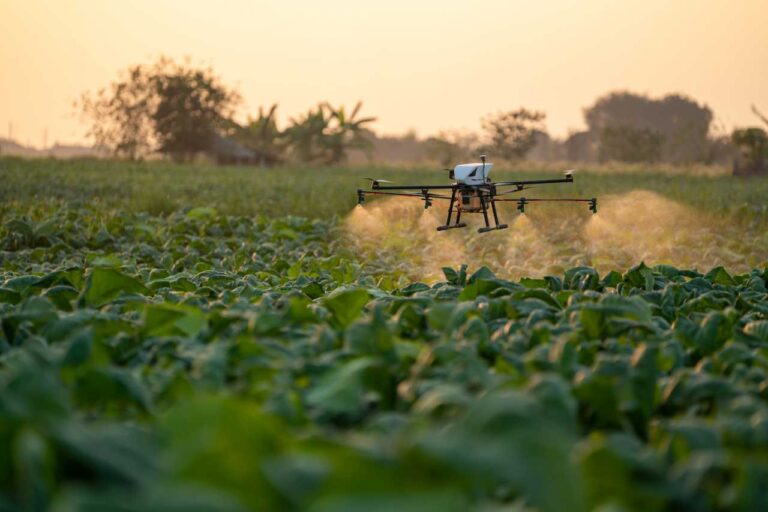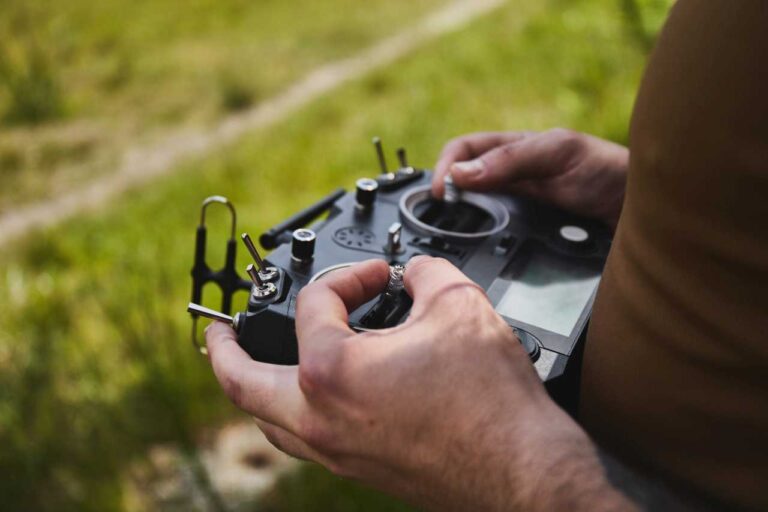Ever wondered how drones handle breezy days? As a drone expert, I get this question a lot, especially in the form of can drones fly in wind. This article will reveal how drone technology helps these aerial vehicles face the winds. You’ll also learn when it’s safe for your vehicle to take flight.
To ensure a safe flight, here’s a general rule of thumb: make sure the wind speed is two-thirds or less of your drone’s maximum speed. For example, if your drone can fly up to 18 miles per hour (mph), it’s best to avoid flying in wind speeds exceeding 12 mph. This way, you can enjoy your drone flight without any worries.
Different drones handle windy conditions differently. Commercial drones, with advanced drone technology, often outperform recreational ones. Winds can change a drone’s course. They can challenge its stability and pose risks if too strong.
Drone technology has advanced quickly. Modern drones have features like gyro stabilization. They also have advanced flight control systems. These features help drones stay steady in gusts.
Yes, drones can handle wind. But it’s vital to know your drone’s limits in windy conditions, including how fast can a drone fly and how far can drones fly. These factors are crucial in understanding the capabilities and limitations of your drone in different weather scenarios. Always check the weather and know your drone’s capabilities before flying. Safety first!
Can Drones Fly In The Wind: At What Wind Speed?

Drones, with their advanced drone technology, have become a popular tool for various applications, from aerial photography to surveillance. However, their ability to operate in windy conditions is a topic of interest for many enthusiasts and professionals.
Different drones have varied wind resistance levels. For instance, the Mavic Mini, a lightweight drone, might struggle in winds exceeding 18 mph. In contrast, the Mavic 2, with its robust build and advanced aerodynamics, can comfortably handle wind speeds up to 24 mph. The DJI Phantom, another popular choice among drone enthusiasts, boasts a max wind resistance of around 22 mph.
It’s essential to understand that these figures are not just about the drone’s speed but also its aerodynamics and thrust-to-weight ratio. A drone’s design, including its weight, propeller size, and motor power, determines how well it can counteract the force of the wind.
Moreover, while a drone might have a maximum wind speed it can handle, it’s always safer to operate it at a safe wind speed, which is typically two-thirds of its max capability. For example, if a drone’s top speed is 30 mph, it’s recommended to fly it in winds no stronger than 20 mph for optimal control and safety.
In conclusion, while many drones can withstand winds of varying speeds, it’s crucial to be aware of your specific drone’s capabilities. Always refer to the manufacturer’s guidelines and specifications to ensure safe and efficient flights in windy conditions.
Know the Different Wind Types

When it comes to flying drones, understanding the types of winds and their effects is crucial. Wind isn’t just a single entity; it varies in type and intensity, each having its unique impact on drone flight.
Constant Wind: This is the average wind speed in a given environment. While it provides a baseline, it’s essential to remember that in nature, truly constant winds are rare.
Turbulent Flow: A continuous fluctuation accompanying the constant wind. Influenced by factors like wind shear and topographic elements, turbulence can be unpredictable. Models like the Dryden and Von Karman describe its behavior, giving drone pilots insights into potential flight challenges.
Wind Shear: Defined as the change in wind speed over short distances or times, wind shear can be particularly challenging for drones. Whether it’s caused by topography, nocturnal jets, or other factors, wind shear can drastically alter a drone’s flight path.
Propeller Vortex: When a drone’s propeller rotates, it compresses air, forming a vortex field. This vortex can influence the flight of other drones, especially when flying in close formation.
Observable Effects: Drones, especially lighter ones, are highly susceptible to wind disturbances. Wind can alter a drone’s attitude, speed, and position. For instance, Facebook’s Aquila drone experienced a structural failure due to a strong gust in 2016, underscoring the importance of understanding wind types.
In essence, while drones are marvels of drone technology, they’re not immune to the forces of nature. Recognizing the different wind types and their potential effects can help pilots ensure safer and more efficient flights, even in high wind conditions.
How to Determine Wind Speed

Flying a drone requires more than just skill; it demands an understanding of the environment, especially the wind. So, how can you accurately gauge the wind speed before your drone takes to the skies?
- Weather Forecasts: Modern technology offers a plethora of weather forecast apps and websites. These platforms provide real-time data, giving pilots a heads-up on the expected wind conditions. However, remember that these forecasts are based on the nearest weather station, and actual conditions might vary, especially in windless conditions or rapidly changing current conditions.
- Anemometer: A precise tool for those serious about drone flying. An anemometer directly measures the wind speed around you. But, it’s worth noting that wind can differ at higher altitudes, so always be prepared for variations during flight.
- Beaufort Scale: A classic method, the Beaufort scale, categorizes wind speeds using descriptive terms. From “calm” conditions indicating almost no wind to “strong breeze” descriptions, this scale provides a tangible sense of wind conditions based on observable effects on land and sea.
While these methods offer insights into wind conditions, it’s also essential to be aware of regulations. The Federal Aviation Administration (FAA) has guidelines ensuring safe drone flights. While they might not specify wind speed limits, they emphasize safety, which includes understanding and monitoring wind conditions.
In essence, before your drone takes off, ensure you’re equipped with accurate wind speed knowledge. It’s not just about the drone’s capability but also about ensuring safety and compliance with FAA regulations.
What Will Happen If I Fly My Drone in Strong Winds?
Flying a drone in strong winds is a challenging endeavor. While drone technology has advanced significantly, the forces of nature can still pose significant risks. Here’s what might happen when you fly your drone in high winds:
Danger at Take Off
The moment a drone fly lifts off the ground, it faces the immediate challenge of wind conditions. Strong winds can push the drone off its intended path, making it difficult to gain altitude. Additionally, the drone’s weight plays a crucial role in its stability during take-off. Lighter drones might struggle more than their heavier counterparts. It’s essential to be aware of wind warnings and understand the potential wind tunnel effects that can displace a drone during its initial ascent.
Hovering Difficulty
Once airborne, a drone’s ability to hover becomes paramount. Winds can affect the drone’s stability, making it drift or sway. The drone’s control systems and sensors work in tandem to maintain its position, but strong winds can challenge even the most advanced systems. The control of your drone is tested as it tries to counteract the wind’s force using its aerodynamics and onboard sensors.
Loss of Control
In extreme wind conditions, there’s a risk of loss of control. The drone might get carried away, especially if it’s caught in high winds. Switching between different flight modes like P-GPS or RTH can help regain control, but it’s no guarantee. The drone’s behavior can become unpredictable, and turbulence can further exacerbate the situation.
Danger at Landing
Landing is another phase where the drone is vulnerable. As it descends, it needs to find a stable level to land. Strong winds can push the drone off its intended landing spot, leading to rough landings. Monitoring the battery level is crucial, as fighting against the wind can drain the battery faster than usual. The drone’s design and performance play a significant role in ensuring a safe landing.
Tips For Flying Your Drone In The Wind

Flying a drone in windy conditions can be a daunting experience, even for seasoned drone operators. Here are some practical tips to ensure a safe flight:
Choose a Launch Location
Selecting the right location is crucial. Always opt for a safe location shielded from gusty winds. Before taking off, check weather forecasts to anticipate wind patterns. It’s always on the safe side to launch from an area with minimal wind interference. Remember, the best way to start is by ensuring a stable take-off.
Hand Launching Techniques
For those adept at drone flying, hand launching can be an effective technique in windy conditions. It requires a skilled drone pilot to ensure the drone fly safely. If you’re new, seek guidance from experienced drone operators to master this skill.
Keep Your Drone Close
Maintaining a close range ensures better control over your drone. Especially in unpredictable winds, it’s a strategy many drone hobbyists swear by. It not only ensures safety but also gives a clearer video feed.
Fly Against the Wind First
When starting your flight, it’s a good practice to fly against the wind. This strategy ensures that your drone uses less battery when returning with the wind on its back. Consider it a rule of thumb for efficient battery use.
Adjust Drone Speed
In higher winds, it’s advisable to reduce your drone’s maximum speed. While drones have a high max speed, flying at top velocities in strong winds can be risky. Some drones come with a sport mode; use it judiciously.
Keep the Drone Low
Flying at a lower altitude can reduce the impact of stronger winds found at higher altitudes. It also enhances the stability of the drone, ensuring clearer footage.
Stay Away from Obstacles
Windy conditions can push your drone into obstacles. Trees, buildings, and other structures pose risks, especially in extreme weather conditions. Always be aware of your surroundings.
Landing Precautions
Landing in windy conditions requires extra caution. Ensure you have enough battery power for a controlled descent. Always refer to the User manual and Manufacturer’s guidelines for best practices, especially if you notice weaker batteries or reduced battery life.
Remember, while drones are equipped with advanced technology, it’s the pilot’s responsibility to ensure safety during windy flights. Always prioritize safety over capturing the perfect shot.
Conclusion
While the thrill of flying drones is undeniable, safety should always be the top priority. Part of ensuring safety is knowing how to calibrate a drone, which is crucial in preparing for various flight conditions. Monitoring wind conditions, understanding your drone’s capabilities, and being aware of its design intricacies are essential. As drone technology continues to evolve, we can expect even more stable and wind-resistant drones in the future, further enhancing the flying experience.

